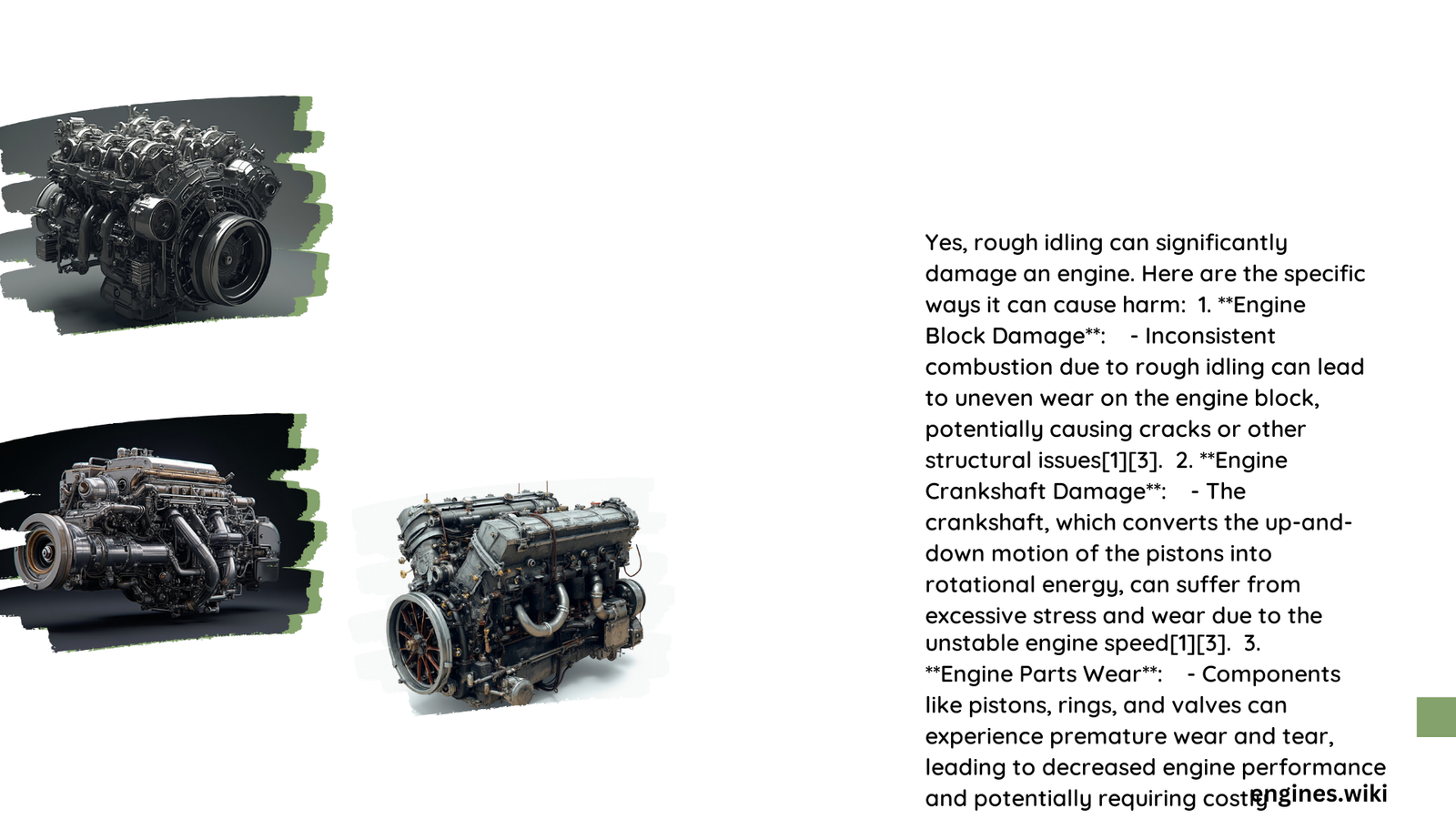Rough idle can indeed damage an engine over time. It’s a symptom of underlying issues that, if left unaddressed, can lead to increased wear and tear on various engine components. Rough idling can cause uneven combustion, vibrations, and stress on the engine block, crankshaft, pistons, and other critical parts. This can result in reduced engine performance, decreased fuel efficiency, and potentially significant repair costs if not addressed promptly.
What Are the Mechanisms of Engine Damage from Rough Idling?
Rough idling can damage an engine through several mechanisms:
-
Engine Block and Crankshaft Stress: Uneven combustion leads to vibrations and stress, potentially causing microscopic cracks and accelerated wear.
-
Piston and Cylinder Wear: Excessive heat and stress from misfires can increase wear on piston rings and cylinders. For example, piston ring gap may increase by 0.01-0.1 mm per 10,000 miles under normal conditions, but this rate can be significantly higher with rough idling.
-
Fuel System Strain: Issues like clogged fuel filters or faulty fuel pumps can cause the engine to work harder, increasing wear on components like the fuel pump and injectors.
-
Ignition System Degradation: Bad spark plugs or wires can cause misfires, leading to increased wear on the ignition system. Spark plug electrode gaps can increase by 0.01-0.05 mm per 10,000 miles, accelerated by rough idling conditions.
How Does Rough Idle Affect Engine Performance?

Rough idle can have significant impacts on engine performance:
- Horsepower Loss: A faulty spark plug can reduce engine horsepower by 5-10%.
- Fuel Efficiency Reduction: Dirty fuel injectors can decrease fuel efficiency by 5-10 MPG.
- Emissions Increase: A stuck EGR valve can increase NOx emissions by 10-20 grams per mile.
What Are the Primary Causes of Rough Idle?
Common causes of rough idle include:
- Spark Plug Issues
- Failure Rate: Every 30,000 to 60,000 km
-
Repair Cost: $100 to $300
-
Fuel Injector Problems
- Failure Rate: Variable, depends on maintenance
-
Repair Cost: $50 to $200 for cleaning, $500 to $1,500+ for replacement
-
Clogged Fuel Filters
- Failure Rate: Every 50,000 miles or as per manufacturer recommendation
-
Repair Cost: $10 to $50, plus labor
-
Vacuum Leaks
- Failure Rate: Variable, increases with age
- Repair Cost: $50 to $200
How Does Rough Idle Impact Engine Longevity?
Rough idling can significantly reduce engine lifespan:
- It can potentially decrease engine life by 10,000 to 20,000 miles.
- RPM fluctuations of 100-200 during idling can increase wear on components like piston rings and cylinders by 20-50% compared to a stable idle.
What Are the Long-Term Consequences of Ignoring Rough Idle?
Ignoring rough idle can lead to:
- Accelerated wear on engine components
- Decreased fuel efficiency
- Increased emissions
- Potential for more severe and costly repairs
How Can You Diagnose the Cause of Rough Idle?
To diagnose rough idle:
- Check for engine warning lights
- Listen for unusual sounds
- Feel for excessive vibrations
- Use an OBD-II scanner for error codes
- Inspect spark plugs, fuel injectors, and vacuum lines
What Are the Best Practices to Prevent Rough Idle?
To prevent rough idle:
- Follow regular maintenance schedules
- Use high-quality fuel and oil
- Replace spark plugs as recommended
- Keep the fuel system clean
- Address any engine issues promptly
By understanding the causes and effects of rough idle, vehicle owners can take proactive steps to maintain their engines and prevent potential damage. Regular maintenance and prompt attention to any signs of rough idling can help ensure optimal engine performance and longevity.
References:
1. Kroftools Blog
2. Custom Complete Automotive
3. Bell Performance
